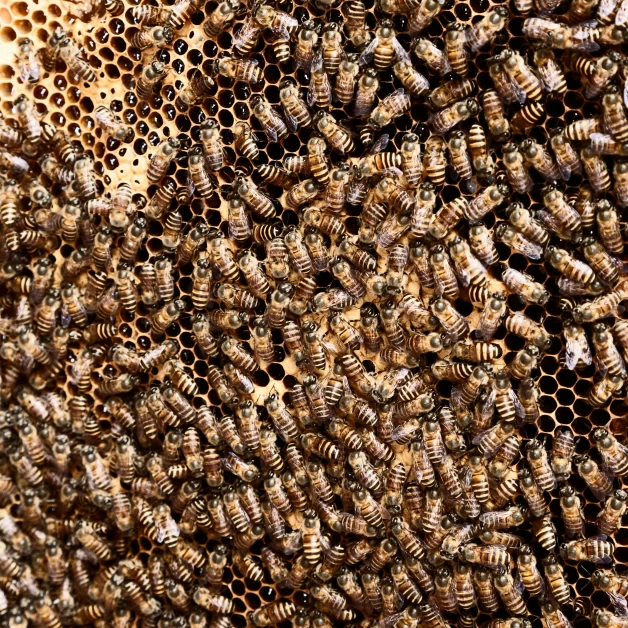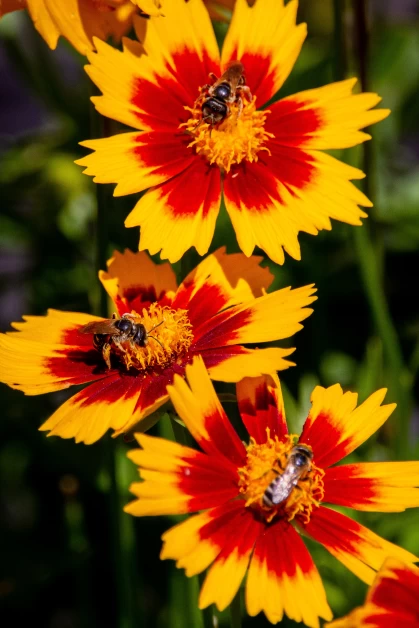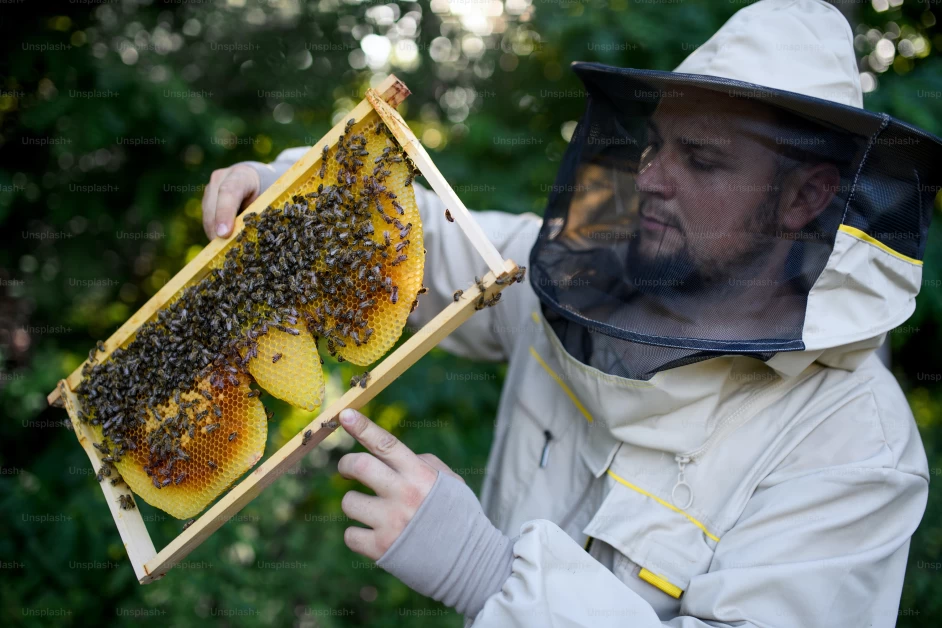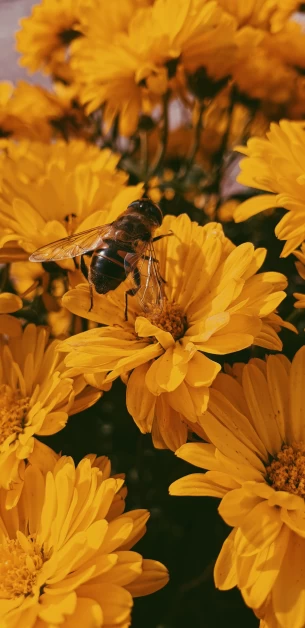Honey, the golden elixir coveted by humans for centuries, is a remarkable product of nature. At the heart of this sweet creation are the diligent honey bees, particularly the worker bees, who dedicate their lives to producing the delectable nectar known as honey. In this exploration, we delve into the intricate process of how do bees make honey, the invaluable benefits of their labor to our communities, and what we can do to help preserve and prolong their honey production.
The Honey-Making Process
The journey of honey production begins with worker bees, the backbone of a bee colony. These dedicated insects embark on a quest to collect nectar from flowers. Equipped with their specialized proboscis, honeybees suck nectar from the flowers, which they store temporarily in their honey stomach. Nectar, a sugary liquid secreted by flowers, contains the essence of the plants’ reproductive success, making it a vital source of energy for honeybees.
Once the nectar collected is sufficient, honeybees return to the hive, where the process of making honey truly begins. The worker bee regurgitates the nectar into the waiting mouths of house bees within the colony. This communal effort involves house bees repeatedly regurgitating and transferring the nectar amongst themselves, thus breaking down complex sugars into simpler forms. They also add enzymes to the mix, which kick-start the process of converting nectar into honey.
The next crucial step involves the reduction of moisture content in the nectar. House bees fan their wings vigorously, creating a warm breeze within the hive that evaporates excess water from the nectar droplets. As the moisture content decreases, the nectar thickens and becomes the familiar, sweet nectar we know as honey. This transformation is vital as it prevents fermentation and preserves the honey.
How Fast Can Bees Make Honey?
The speed at which bees can produce honey depends on various factors, including the size and strength of the bee colony, the availability of nectar sources, and environmental conditions. Bees are remarkably efficient at honey production, but it is a gradual and continuous process. Here are some key factors that influence the pace of honey production by bees:
Strength of the Bee Colony
The number of worker bees in a colony plays a significant role in honey production speed. A strong, populous colony with a large workforce can collect nectar and convert it into honey more rapidly than a smaller or weaker colony.
Nectar Availability
The availability of nectar-rich flowers in the surrounding area is a critical factor. Honeybees need access to abundant nectar sources to collect sufficient quantities for honey production. In areas with a diverse range of blooming plants, honey production can be faster.
Season and Weather Conditions
Seasonal changes and weather conditions also influence the pace of honey production. During the peak of the nectar flow, typically in the spring and early summer, bees can gather nectar more quickly. Warm and sunny weather is favorable for foraging, while rain or cold temperatures can slow down their activity.
Foraging Efficiency
The efficiency of foraging bees is crucial. Bees need to visit many flowers to collect enough nectar to produce honey. Efficient foraging behavior, such as visiting flowers with high nectar concentrations, can expedite the process.
Hive Management
The management of the hive by beekeepers can affect honey production. Beekeepers who provide healthy hives with adequate space for storing honey and managing diseases and pests can help bees produce honey more efficiently.
Bee Species
Different species of bees have varying rates of honey production. For instance, honey bees (Apis mellifera) are known for their ability to store substantial honey reserves, while other bee species may store less honey.
Environmental Factors
Environmental factors such as the availability of water sources for bees and the overall health of the ecosystem can also impact honey production speed.
In optimal conditions, a strong honey bee colony can produce and store significant amounts of honey throughout the active foraging season, potentially filling multiple honeycombs within their hive. However, the exact rate at which bees make honey can vary widely depending on the factors mentioned above.
It’s important to note that honey production is a gradual and continuous process that unfolds over weeks or months, rather than occurring rapidly in a short period. Beekeepers often harvest honey once the bees have stored sufficient amounts and capped the honeycomb cells with beeswax, indicating that the honey is ready for collection.
Do Bees Make Honey from Pollen?
Bees are renowned for their industriousness and vital contributions to our ecosystems. When we think of bees, we often associate them with honey production, but do they make honey from pollen? Let’s explore below:
The Role of Pollen for Bees
Pollen is a vital component of a honey bee’s diet, but it does not directly contribute to honey production. Bees, primarily the worker bees, collect pollen as a source of protein and other essential nutrients. Pollen is essential for the development of bee larvae and for sustaining the adult bees within the colony.
When foraging, bees visit flowers to collect pollen, which sticks to their specialized hairs and bodies. This pollen is then transported back to the hive, where it is stored in pollen cells. Worker bees pack the collected pollen into these cells, mixing it with nectar to create a substance called bee bread. Bee bread serves as the primary protein source for the colony and is crucial for the growth and health of bee larvae.
While pollen plays a critical role in bee nutrition, the production of honey is a separate process entirely. Honey is derived from nectar, a sugary liquid produced by flowers to attract pollinators like bees. Unlike pollen, which is primarily a protein source, nectar is rich in carbohydrates.
When they started to collect nectar, they use their proboscis to suck it from flowers and store it temporarily in the bee’s honey stomach. The nectar is then transported back to the hive, where worker bees regurgitate it into the waiting mouths of house bees. This regurgitated nectar undergoes a transformation within the hive.
Worker bees add enzymes to the nectar, breaking down the complex sugars it contains into simpler forms, mainly glucose and fructose. The next crucial step involves reducing the moisture content of the nectar. House bees fan their wings, creating a warm breeze within the hive that facilitates the evaporation of excess water from the nectar droplets. As the moisture content decreases, the nectar thickens and becomes the sweet nectar we recognize as honey. This transformation is vital as it prevents fermentation and preserves the honey.
Does the Kind of Pollen Work?
Yes, the type of pollen collected by bees can have an impact on the flavor and composition of honey. Bees gather pollen from a variety of flowering plants, and the specific types of flowers they visit will influence the characteristics of the honey they produce. This is often referred to as “floral source” honey.
The flavor, aroma, color, and even the nutritional content of honey can vary depending on the predominant types of flowers from which the bees collect nectar and pollen. For example:
- Wildflower Honey: Bees that forage on a diverse array of wildflowers produce wildflower honey. This honey can have a complex flavor profile with subtle floral notes and may vary in color from light to dark, depending on the specific mix of flowers in the region.
- Clover Honey: Bees that primarily visit clover flowers will produce clover honey, which is known for its mild, sweet flavor and light color.
- Orange Blossom Honey: Bees that collect nectar from orange blossom flowers produce a honey with a distinct citrus aroma and flavor.
- Lavender Honey: Honey from bees that frequent lavender fields may have a delicate lavender aroma and a slightly herbal taste.
- Eucalyptus Honey: Bees that forage on eucalyptus trees produce honey with a unique, robust flavor that often carries menthol or medicinal notes.
These are just a few examples, and the diversity of honey flavors is practically endless, depending on the region and the availability of different flower sources. Some honey enthusiasts seek out specific types of honey for their distinct flavors and characteristics, much like one might appreciate different varieties of wine.
In essence, the kind of pollen that bees collect does indeed work to influence the sensory and compositional attributes of honey, making honey a fascinating and diverse natural product shaped by the local floral environment and the foraging habits of honey bees.
What Do Bees Use Honey For?
Bees utilize honey for several essential purposes within their hive, each contributing to the survival and well-being of the bee colony. Here are the primary uses of honey for bees:
Food Source
Honey serves as the primary food source for bees, providing them with the necessary energy and nutrients to sustain their activities. Worker bees, drones, and the queen bee all consume honey as their main source of nourishment. The carbohydrates in honey, primarily glucose and fructose, provide a quick source of energy, while the trace amounts of proteins and other nutrients support their overall health.
Winter Survival
Honey plays a critical role in the survival of a bee colony during the winter months or times of scarcity. Bees store excess honey in their hives, sealing it in hexagonal cells made of beeswax. This stored honey acts as a reserve food supply when foraging becomes difficult due to cold weather or a shortage of nectar-producing flowers.
Feeding Bee Larvae
Honey is essential for the growth and development of bee larvae. Nurse bees feed young bee larvae a mixture of royal jelly, pollen, and honey. As the larvae mature, their diet shifts, with honey becoming a significant part of their diet. Honey provides the carbohydrates and energy needed for larvae to pupate and eventually emerge as adult bees.
Maintaining Humidity
Bees use honey to regulate the humidity within the hive. The hygroscopic nature of honey means it can absorb moisture from the hive’s environment or release it as needed. This helps maintain an optimal humidity level for bee comfort and hive stability.
Sealing and Preservation
Bees use honey to seal and preserve various substances within the hive. They seal brood cells with a mixture of honey and wax to protect developing bee pupae. Honey also helps to seal cracks or openings in the hive, preventing unwanted intruders and maintaining a stable internal environment.
Communication
Honey can also serve as a means of communication among bees. For example, scout bees may return to the hive and perform a “waggle dance” to convey the location of a promising nectar source to other foragers. This dance can involve the transfer of a small amount of nectar or honey from the returning bee to its hive mates, helping them recognize the scent and taste of the forage area.
Honey is a versatile and vital resource for bees, serving as their primary source of nutrition, a means of survival during harsh conditions, and a tool for maintaining the hive’s environment and communication. The careful management of honey stores within the hive is essential for the health and longevity of a bee colony.
Preserving and Prolonging Honey Production
Given the critical role honey bees play in our ecosystems and food supply, it is our responsibility to safeguard their well-being. To help preserve and prolong honey production, we can take several actions:
- Plant Bee-Friendly Gardens: Cultivate gardens filled with native, nectar-rich flowers to provide honey bees with ample forage.
- Avoid Pesticides: Choose organic and bee-friendly alternatives to chemical pesticides, which can harm bees and their colonies.
- Support Local Beekeepers: Purchase honey from local beekeepers who follow sustainable and ethical beekeeping practices.
- Raise Awareness: Educate others about the importance of honey bees and their role in our environment.
Promotion of Honey Browning’s Honey Products: At Honey Browning, we take pride in offering the finest raw honey, created with utmost care by our honey bees. Our products are a testament to the dedication of worker bees in our hives. By choosing Honey Browning’s honey, you not only savor the purest flavors of nature but also contribute to the preservation of honey bee populations.
Final Thoughts
The intricate process of how bees make honey is a testament to the remarkable abilities of these tiny yet highly organized insects.
The benefits of bees making honey extend far beyond the delight it brings to our taste buds. These tireless pollinators play a vital role in our ecosystems and communities, ensuring the reproduction of countless plants and sustaining our agricultural systems. Their contributions to biodiversity, economic value, and educational opportunities make them indispensable allies in the natural world.
Let us continue to appreciate the wonders of honeybees in making honey and actively participate in safeguarding these remarkable pollinators.
Why Choose Honey Browning’s Honey?
Our honey is meticulously crafted to deliver an exceptional taste that captures the essence of sweet nectar. With every jar of Honey Browning’s honey, you support sustainable beekeeping practices that prioritize the well-being of honey bees and the environment.
Join Us in Sustaining Honey Bee Populations
Make a difference today by choosing Honey Browning’s honey products. With each purchase, you help ensure the continued production of more honey while enjoying the unparalleled quality of our raw honey. Together, we can protect honey bees and their invaluable role in our communities.
Don’t miss out on the opportunity to savor the purest, most exquisite honey. Check out our shop section and order your jar of Honey Browning’s honey now and be a part of the sweet solution! For bulk orders, please don’t hesitate to contact us.




